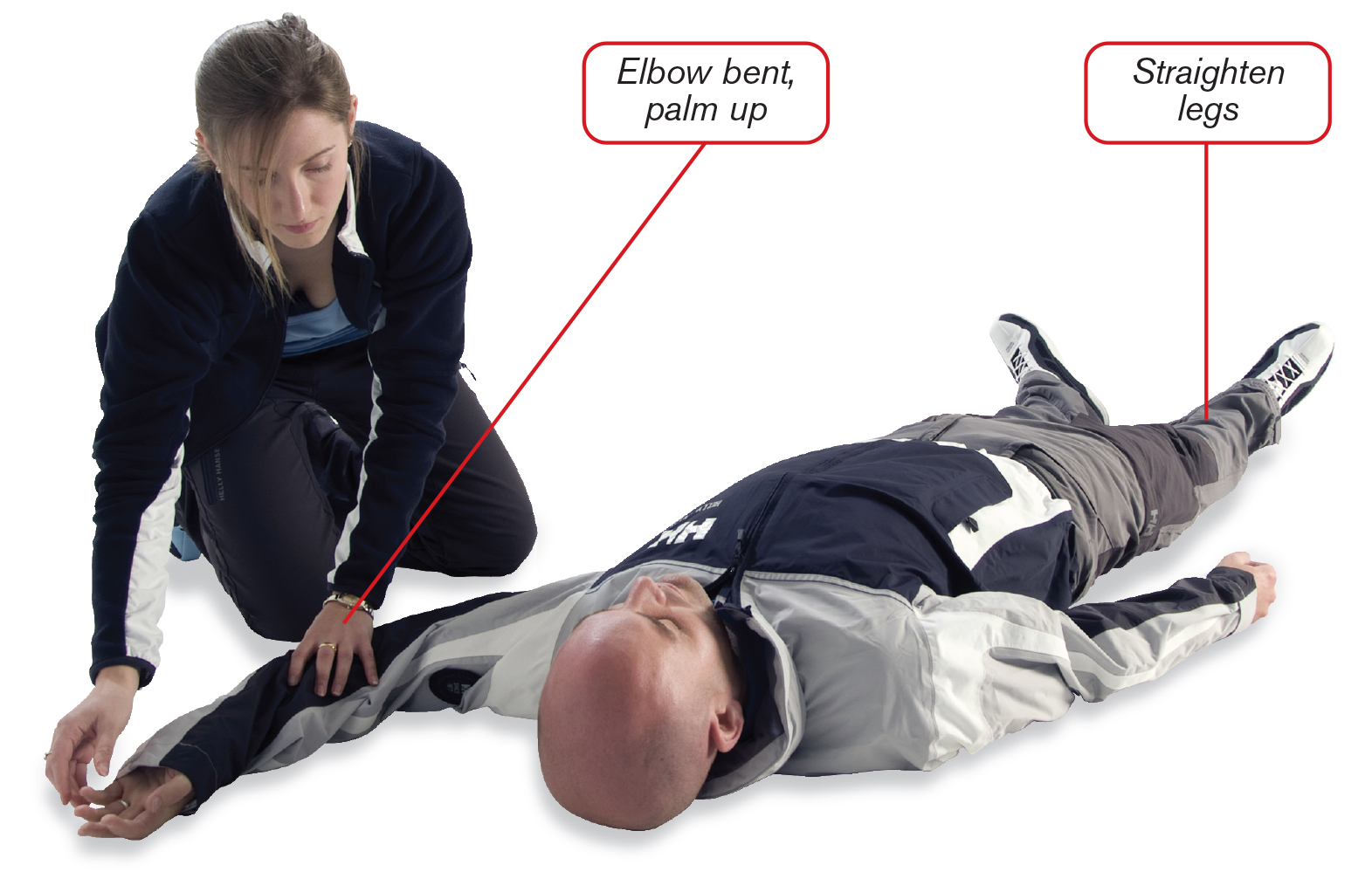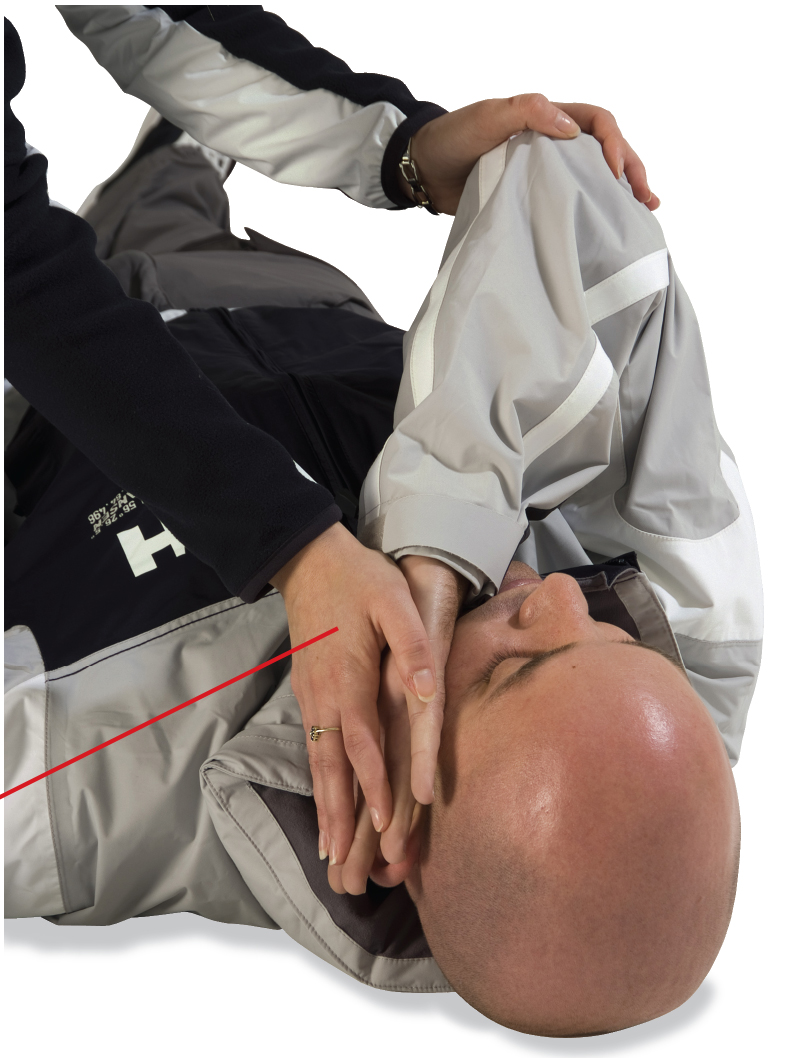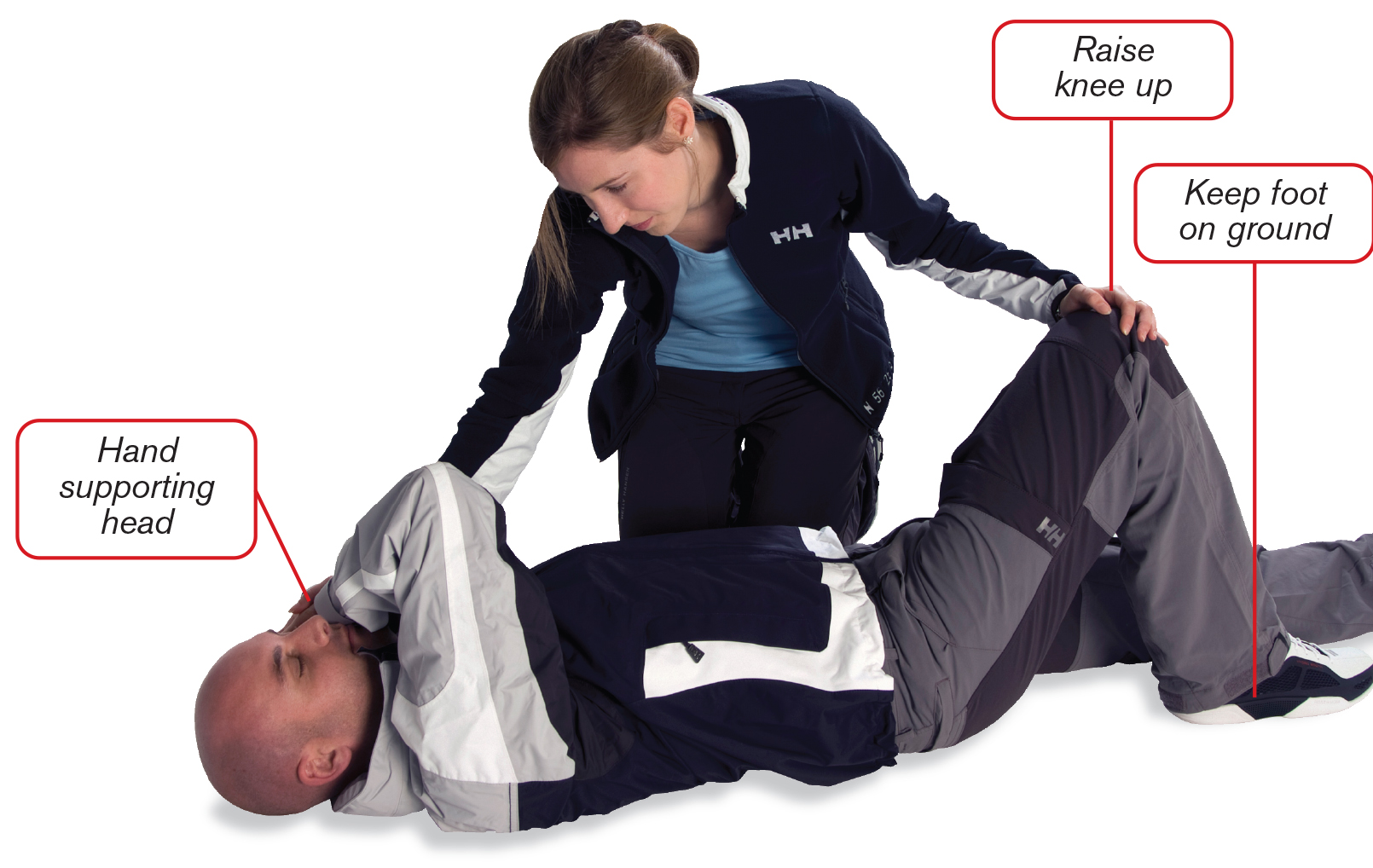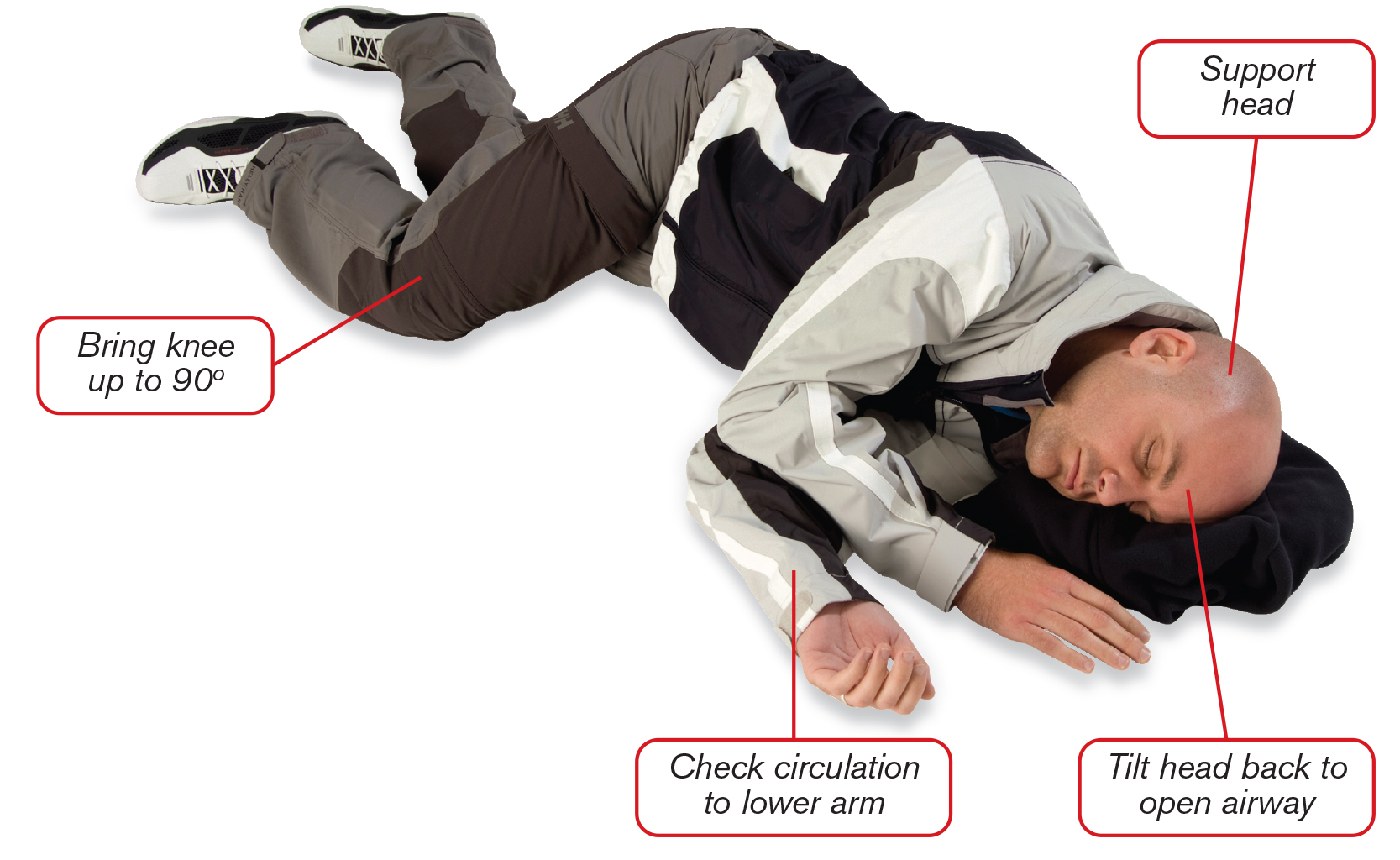The Unconscious Casualty
Book Extract
Cause
There are numerous possible causes for someone being unconscious. These may be related to injury or trauma, drugs, alcohol or other poisoning, medical conditions or environmental conditions.
Threat
The immediate threat to life in an unconscious casualty comes from the tongue falling back and obstructing the airway, thus preventing breathing, and from the inhalation of vomit.
Response
The role of the rescuer is to position the casualty to secure their airway, and to assess the possible causes of the unconsciousness.
Follow the DR ABC routine and check that the casualty is actually unconscious. Even if they respond but are very drowsy, continue with the recovery position. If there is no response, open the airway and check that breathing is present. Once breathing is confirmed, the casualty must be placed in a safe position to ensure the airway remains open to allow breathing, and to help prevent the inhalation of vomit.

Kneel next to the casualty and straighten both their legs. Remove their spectacles if they are wearing them. Quickly check there is nothing in the casualty’s pockets that may cause them harm when they are turned onto their side. Place the arm closest to you out at right angles to the body with the elbow bent and the palm uppermost.

Bring the casualty’s opposite arm across their chest and hold the back of their hand against their cheek with your own palm. Do not let go. This hand supports the head as the casualty is turned.

With your other hand, grasp the leg furthest away from you just above the knee and pull it up, keeping the foot on the ground. With your hand on the knee, pull this leg towards you to roll the casualty on their side.

Tilt the casualty’s head back to make sure the airway remains open. You can adjust the casualty’s hand under their cheek to support their head, or use a pillow. Adjust the casualty’s upper leg so the hip and knee are at right angles.
Aftercare
The casualty’s breathing must be checked frequently – every one to two minutes. If they are not breathing, roll them onto their back and commence resuscitation.
If the casualty has to be kept in the recovery position for more than 30 minutes, turn them onto the opposite side to relieve pressure on the lower arm.
Any injury the casualty has suffered may determine which side they should be laid on in the recovery position but securing the airway always takes priority over any injury.
There is more detail on this in Chapter 4: Injuries.
Never leave an unconscious casualty alone unless it is necessary in order to raise the alarm. Cover them to prevent heat loss and protect them from the environment as needed.
Do not move the casualty unless they are in danger as this may cause further harm.
Assess the casualty for signs of injury or possible cause of the unconsciousness, and monitor their pulse. These aftercare observations are detailed in the General Casualty Assessment section in chapter 1.
© Not to be reproduced without written permission from Fernhurst Books Limited.
First Aid Afloat is written by Sandra Roberts. Sandra Roberts worked as a senior lecturer at Warsash Maritime and Superyacht Academy, Southampton Solent University, teaching medical and first aid subjects to seafarers. She is a registered nurse with over 40 years’ experience gained in a wide variety of settings including 18 within the maritime and yachting world.